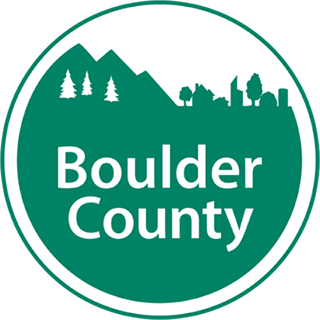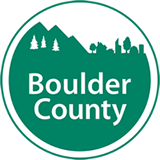If a septic system is well-designed, constructed, and maintained, it can last a long time and provide effective wastewater treatment. The best way to prolong the life of a septic system is by making maintenance part of a daily routine.
Regular Inspection and Maintenance
Septic systems usually last between 15 and 40 years. Older systems may be more susceptible to failure. Knowing what to look for, performing regular maintenance, and keeping track of records can help extend the longevity of systems and save time and money.
- Keep records of when the system was installed, pumped, and repaired. Boulder County Public Health has online records for all approved systems.
- Know where the system is located.
- Watch for and report any unusual surface wet spots on the ground near the system.
- Clean the septic tank’s filter regularly if the system has one.
- If the system has alternating areas, rotate the diverter valve every 6-12 months or as instructed.
- Pump the system every 3-5 years, or more frequently if usage is high. Not pumping enough can cause buildup that clogs the soil treatment area (STA, also known as a drain field or leach field).
- Notice if sewage backs up into the house or if drains are slow. These signs mean that something might be wrong.
It’s a good idea to have the septic system inspected at least once every 10 years or before buying or selling a home. A trained inspector can tell a lot about a system, especially if the tank has been pumped recently. Always use a licensed professional for any maintenance or repairs.
- Before a professional inspection, make sure to uncover the tank lids, gather any maintenance receipts, and have a copy of the Public Health record ready. This helps the inspection go faster and eliminates guesswork.
When making repairs, make sure to obtain any required permits, perform any necessary inspections, and receive final approval records from Boulder County.
Prevent Early System Failure
Systems can fail due to multiple reasons. The most common failure occurs when wastewater can no longer percolate into the soil due to being overloaded with too much water or when the soil becomes clogged.
Reduce Water Intake
Septic systems are designed to handle a certain amount of water each day. This gives time for solids, wastewater, and sludge to separate before the water moves out to the soil treatment area (STA). If too much water is used at once, the system can’t separate them properly. When that happens, the solids and sludge can get into the STA and cause clogs or damage, which can make the system fail sooner than it should.
The average home uses about 75 gallons of water per person per day. A dripping faucet can waste about 2,000 gallons of water in a year, and a leaky toilet can waste as much as 200 gallons every day. Take note if the household is consuming more water than usual – there may be a leak.
The more water a household conserves, the less strain is placed on the septic system. Use energy-efficient appliances and avoid running multiple water-consuming devices, such as the dishwasher and laundry machine, simultaneously. It’s also helpful to spread water use throughout the week. For example, it is better to do laundry every other day rather than multiple loads at once.
It’s also important to keep extra water away from the STA. Don’t install sprinkler systems too close, and make sure water from driveways, hillsides, roof gutters, basement drains, and sump pumps flows away from it. Also, keep trees, bushes, and vegetables at least ten feet away. Watering them adds too much water, and their roots can clog or damage the system.
Reduce Toxics and Cloggers
Even small amounts of harmful chemicals poured down the drain can poison the system and pollute groundwater. These chemicals kill the good bacteria that help to clean the wastewater.
Dispose of household hazardous waste properly. Use bleach and toilet bowl cleaners sparingly and follow the label directions. Natural or organic products are better for the system.
Don’t use septic tank additives. Some additives contain chemicals that can harm the system over time.
Don’t flush or drain things that don’t break down easily, like coffee grounds, grease, cotton swabs, dental floss, diapers, tampons, condoms, cigarette butts, or cat litter.
Try to use the garbage disposal less or, if possible, stop using it altogether. It adds extra sludge, and the septic tank will need more frequent pumping.
Protect the Surface
The surface over the STA should be left undisturbed with only a mowed grass cover.
Keep cars, trucks, and animals off the septic system. Don’t drive over the system. Don’t build over or cover the system with hard surfaces (such as concrete, asphalt, parked vehicles, or structures). The weight can crush the system and cause expensive damage.
Learn More
- A Homeowner’s User Guide to Septic Systems, National Onsite Wastewater Recycling Association (NOWRA)
- Homeowner Resources, NOWRA
- SepticSmart Education Materials, Environmental Protection Agency (EPA)
- Additives
- Septic Systems and Drinking Water (EPA)
- Private Wells and Water Quality Testing



